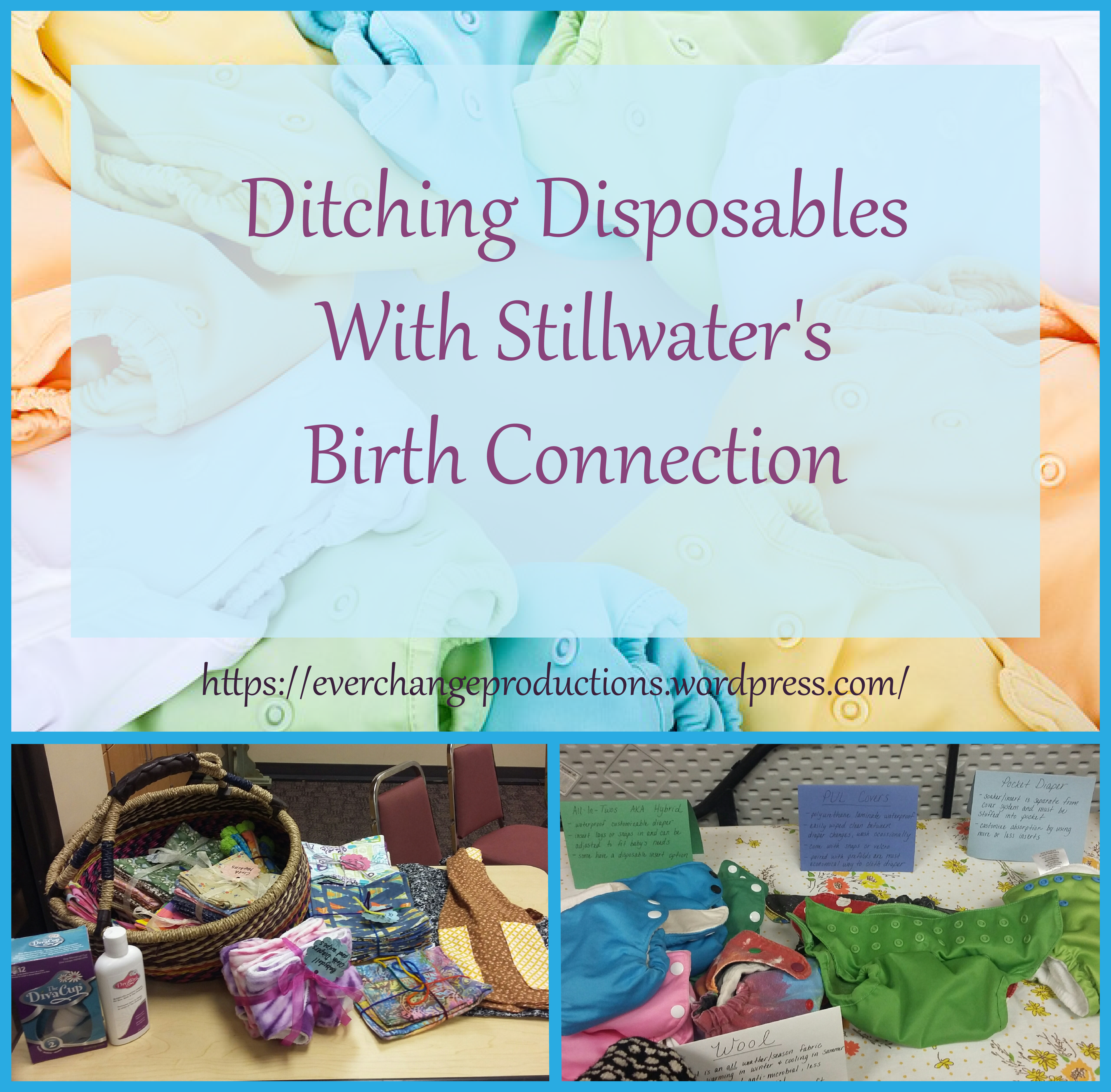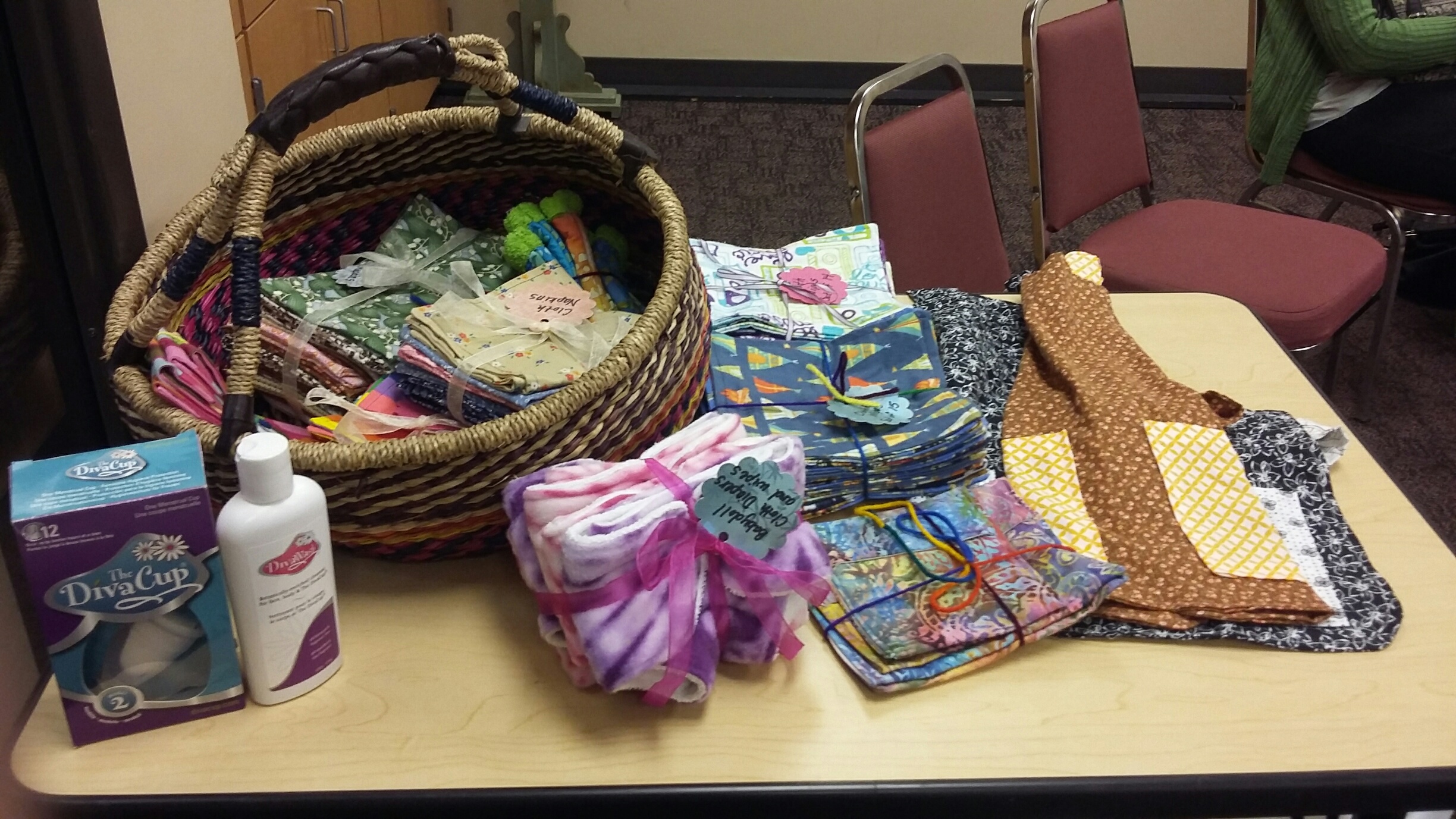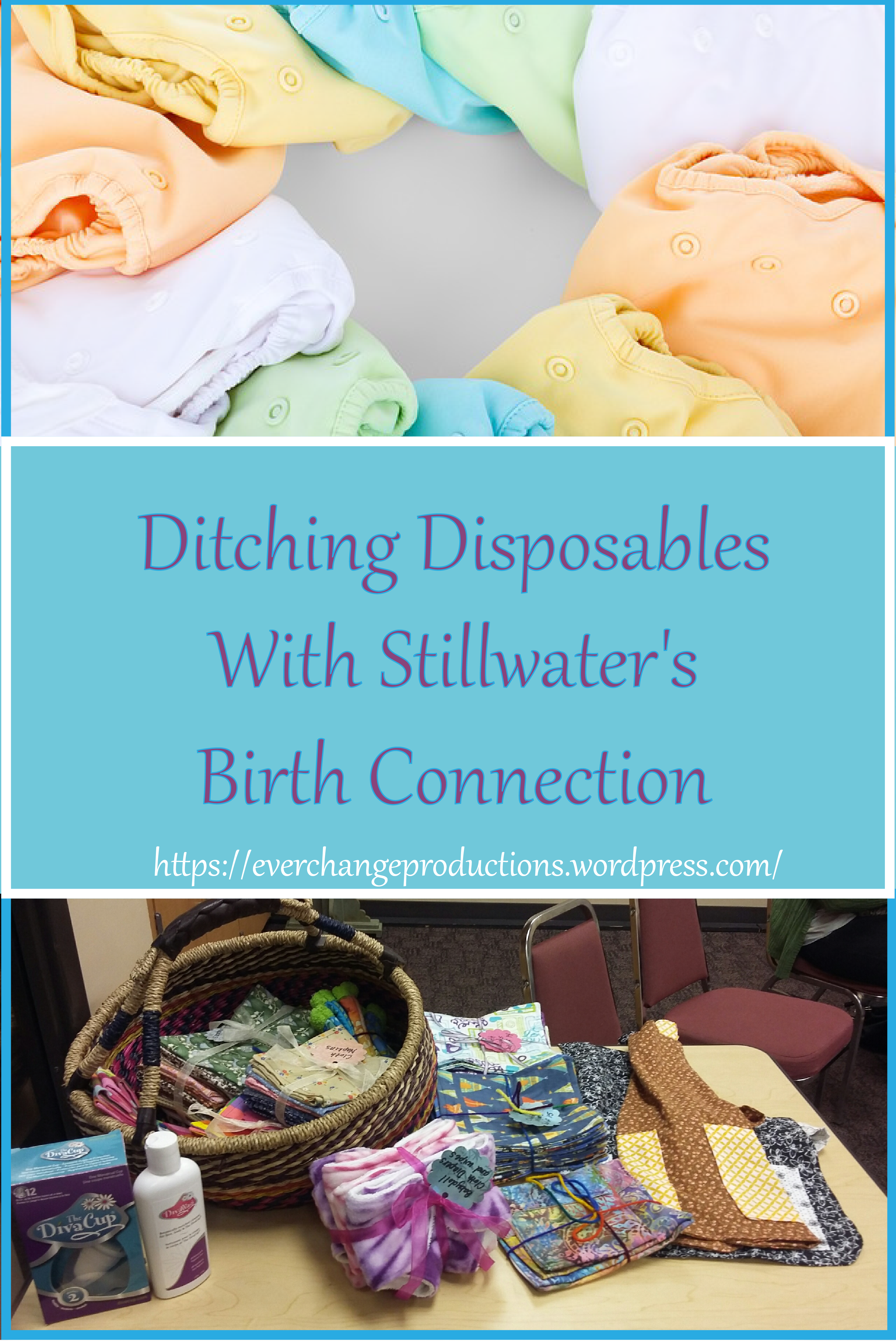Is Ditching Disposables Possible?
In an era with so many sustainable options, ditching disposables is definitely possible.
A few decades ago, the word disposable wasn’t even in our vocabulary. Our grandparents brought their lunches to school and work using cheesecloth or wax paper instead of plastic bags. Milk bottles were drained then collected to be refilled and distributed again. Back then it was all about efficiency and frugality. What cost the least amout of money? What about the environment? Maybe most concerning of all, what about the health of ourselves and our children? These are the things they were the most concerned with.
This post contains affiliate links.

Stillwater Birth Connection
This past Tuesday, I attended a discussion hosted by Stillwater’s Birth Connection at the First United Methodist Church. Typically, mothers or expecting mothers attend these discussions, which range from birthing options to parenting advice and the importance of play. There is more information about this group at the end of this post, if you’re interested. Although, I don’t fit into the aforementioned categories or interests, I was interested in their March discussion on ditching disposables.
These disposables alternatives discussed (pictured below) included:
- Bamboo Towels Unpaper towels, which were cloth towels (Super cute)
- Cloth Napkins
- Diva Cup and other menstrual product replacements
- Cloth Diapers
- Family Cloths, which are replacements for toilet paper
- Snap Bag, which are replacements for bags to put your dirty cloths in

Solutions for Single-Use Products
The point of the discussion wasn’t to ditching disposables at once, though one lady did say cloth diapers were the gateway drug to all other disposable items, but to slowly make changes, adjusting your comfort levels as you go.
A few reasons why you might consider replacing disposable items with their alternatives is to save money, save resources and because they are generally better for your health.
The cost of disposables
The cost of disposables is clear. For just one example, the School Nutrition Foundation conducted a study (PDF) in 2009 that details the cost, labor, and environmental differences between reusable and disposable trays. In the two southern school districts studied, it cost less to wash the reusable trays than to remove the disposables. Add the cost of the disposable trays, and the total cost is about $8,000 more to serve 100,000 meals, which is about 8 cents per meal.
Although this is one type of disposable, you can see an inflated cost in other areas as well. Women really seem to get the short end of the stick because their disposables are more of a necessity than the average paper plate or cup. The average women will foot a bill of up to $1,773.33 for her lifetime.
But those costs add up in more ways than one. The average American office worker goes through around 500 disposable cups over the course of 12 months. Americans even toss out enough paper and plastic cups, forks and spoons every year to circle the equator 300 times.
Diapers, one of the major topics of our discussion, have even more outrageous numbers.
The Cost of Disposables
From birth to toilet training each child will use approximately 5,300 disposable diapers. It takes 440-880 lbs. of fluff pulp and 286 lbs. of plastic (including packaging) per year to supply diapers to a single baby. Behind newspapers and beverage containers, they are the 3rd largest single use product in the waste stream. In Canada and the US more than 20,000,000,000 disposables are discarded into landfill sites each year.
Landfill sites do not provide the conditions necessary for diapers to decompose. They are in effect “mummified” and retain their original weight, volume and form. This is a problem because human feces can contain harmful pathogens and when feces are placed in our landfill sites, as with disposable diapers, there is potential for public exposure (via rodents, pets, insects, birds or groundwater).
Add that to the fact that disposable diapering uses 37% more water than cloth diapering and you get a pretty strong case for cloth diapers.
Health Factors
Waste water from washing cloth diapers is relatively benign, when you consider the waste water from pulp, paper and plastics contain solvents, sludge, heavy metals, unreacted polymers, dioxins and furans. Although cloth diaper use also emits air pollution, the air pollution from the manufacture of disposables is far more noxious. Pulp bleaching emits dioxins and furans into the air, as does incineration because it often produces toxic air emissions and toxic ash.
These kinds of chemicals, which are present in other hygiene products that are constantly touching our skin, have additional health costs too.
For women this might mean more intense PMS symptoms, increased heart diseases, birth defects, cancers and other health issues. But an added bonus of cotton hygiene products feel much better on the skin.
For babies, common health issues associated with disposable diapers are an increase in rashes, the most common side effect, but there could also be issues with their nervous and respiratory systems, and other health problems.
Options for Reusable Diapers
Cloth diapers come in all shapes, sizes, types. Some require more effort than others and you can learn more about that here.
If you’re interested in supporting local Oklahoma businesses, Green Bambino and The Changing Table are good places to start.
During the discussion Lacy Henry mentioned Green Mountain Diapers, which also has excellent resources, if you’re confused about the many cloth diaper choices available.
Another added benefit is children that are cloth diapered potty learn 6-12 months sooner than those in disposables. This builds confidence, independence, and stimulates development.
Join the Discussion for Ditching Disposables
I very much enjoyed learning about ditching disposables, these alternatives to disposable products and the friendly group discussion. Many of the women brought their kids and were so very kind in answering any questions I, or anyone else, had. If you’re interested in learning more about the Birth Connections group, here is a link to their Facebook page, which is very active in helping to answering any questions you might have about mothering and parenting. They also have a cloth diaper loan program, if you’re interested trying them without forking over a bunch of money.
At the end of this post, is a list of all their upcoming meetings, which are on the second Tuesday of every month at the First United Methodist Church.
For more information about beginners steps for going green, check out some of these posts.
How to go green in your daily routine

What a cool event! Thanks for sharing it with us.
I’m glad you liked it! It was a great event!
What a cool event! Thanks for sharing it with us.
I’m glad you liked it! It was a great event!
My DIL has used reusables for her firstborn – they are amazing – with a snap in liner. She’s expecting her second this year.
That’s great! From what I’ve heatd, they really easy to use. Thank you for stopping by. 🙂
My DIL has used reusables for her firstborn – they are amazing – with a snap in liner. She’s expecting her second this year.
That’s great! From what I’ve heatd, they really easy to use. Thank you for stopping by. 🙂